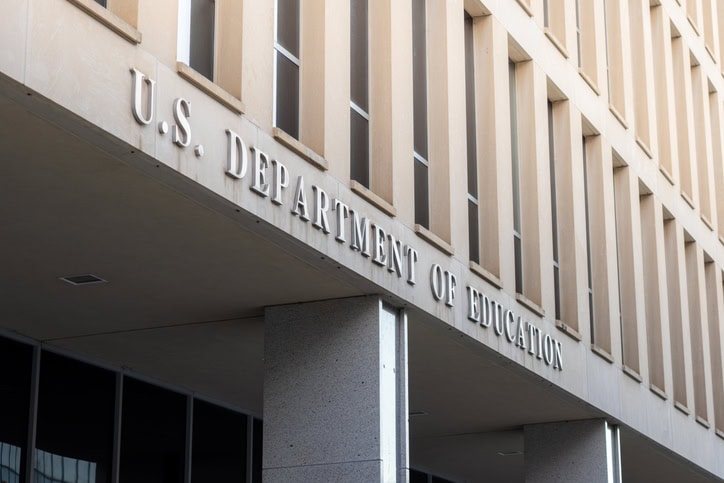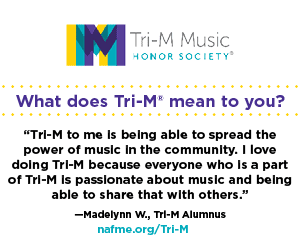NAfME BLOG
President Trump Signs Executive Order Aimed at Eliminating the Department of Education

/ News Posts / President Trump Signs Executive Order Aimed at Eliminating the Department of Education
President Trump Signs Executive Order Aimed at Eliminating the Department of Education
By Zachary Keita, NAfME Advocacy and Public Policy Communications Manager
White House Actions
On March 20, President Trump signed a long-awaited executive order that seeks to dismantle the U.S. Department of Education. The EO directs Secretary McMahon to take “all necessary steps to facilitate the closure of the Department of the Department of Education and return authority over education to the States and local communities.” It also calls for the “uninterrupted delivery of services, programs and benefits on which Americans rely” and directs Secretary McMahon to work with Congress on a plan to transfer federal education programs and their funding to other agencies.
Department of Education Actions
When President Trump took office in January, the Department of Education (ED) had 4,133 staff members. Since that time, approximately 600 staffers have chosen to leave ED, and on March 11, ED announced mass layoffs, firing approximately 1,300 staff members. With a combined reduction in force of nearly 50%, ED’s ability to administer federal education programs will be severely hindered. ED layoffs were pervasive and lowered staffing in various offices across the Department, but layoffs disproportionately targeted financial aid, civil rights, and education research teams.
Congressional Actions
Late last year, the “Returning Education to Our States” Act (S.5384) was introduced by Senator Mike Rounds (SD). While the bill did not pass in the 118th Congress, it offered strategies that could be employed by Congress in partnership with Secretary McMahon. If passed, the “Returning Education to our States Act” would fully abolish ED and transfer its functions, programs, and authorities to several other executive agencies. Under the bill:
- The Individuals with Disabilities Education Act (IDEA) and Impact Aid programs would move to the Department of Health and Human Services (HHS).
- The Office of Indian Education would shift to the Department of the Interior.
- The following federal student aid programs would shift to the Department of the Treasury:
- Pell Grants
- Federal Family Education Loan Program
- William D. Ford Federal Direct Loan Program
- Federal Perkins Loans Program
- Other student loan programs under Title IV of the Higher Education Act
The bill would establish a block grant for all K-12 education programs. The effect would be:
- The Treasury Department would distribute funds to states based on student enrollment numbers. States could use funds for early childhood, elementary, and secondary education, including career and technical education.
Arts Education Alliance Actions
While these actions signal a significant shift in federal education policy, it’s important to remember that fully dismantling a federal agency requires congressional approval. We don’t yet know what shape the U.S. Department of Education may ultimately take, but we do know this: NAfME will continue advocating for music educators and students every step of the way.
NAfME, along with our partners in the Arts Education Alliance, have endorsed the Department of Education Protection Act (H.R. 433), a bill that aims to shield the U.S. Department of Education from efforts to dismantle the agency by prohibiting the use of appropriated funds to decentralize, reduce the staffing level of, or alter the functionality of the Department.
We will continue to provide updates as more details emerge. We will continue to work tirelessly to ensure that the policies shaping the future of education support and protect music educators and their students.
Photo at top: Greggory DiSalvo / iStock / Getty Images Plus
Published Date
March 20, 2025
Category
- Advocacy
- Federal Advocacy & Public Policy
Copyright
March 20, 2025. © National Association for Music Education (NAfME.org)



